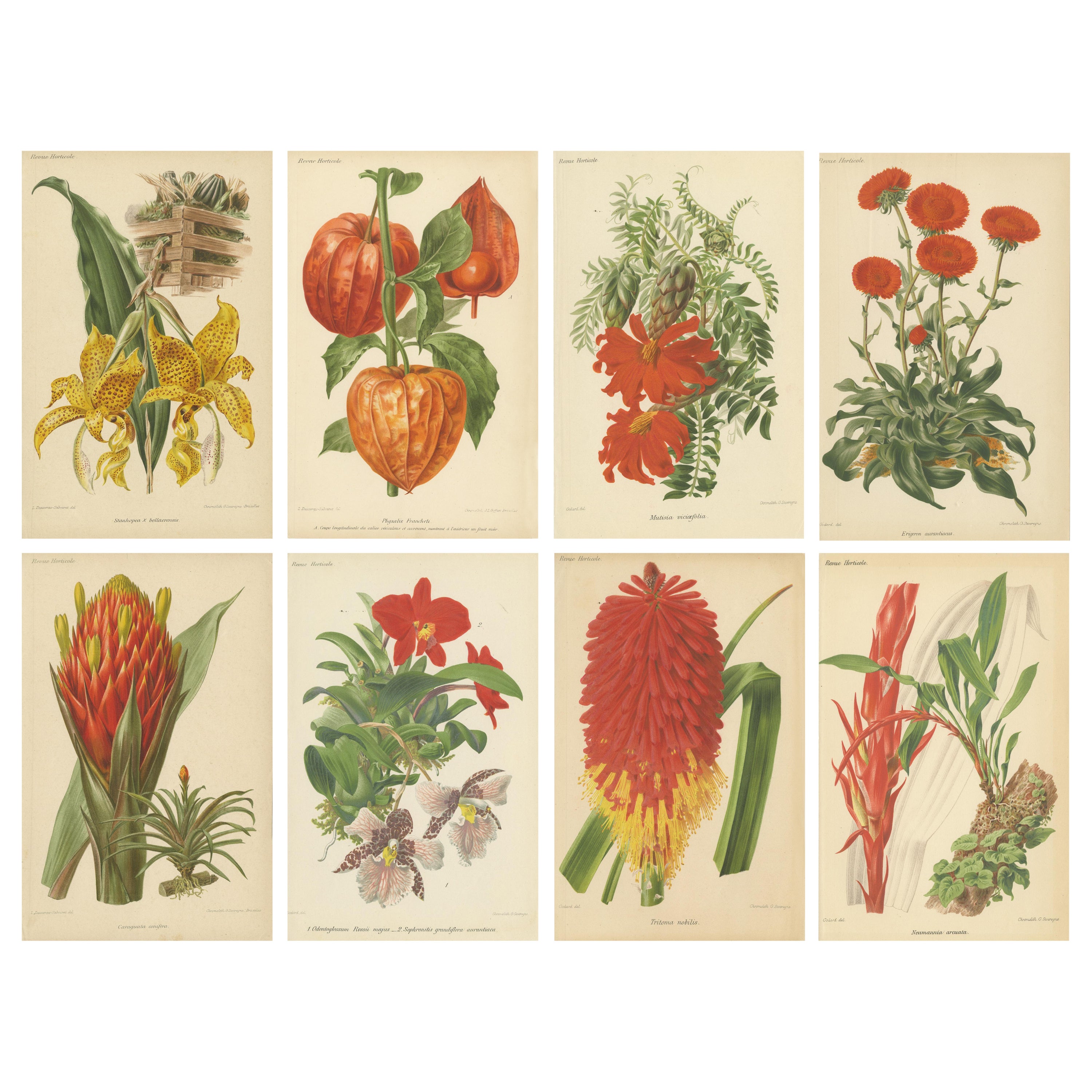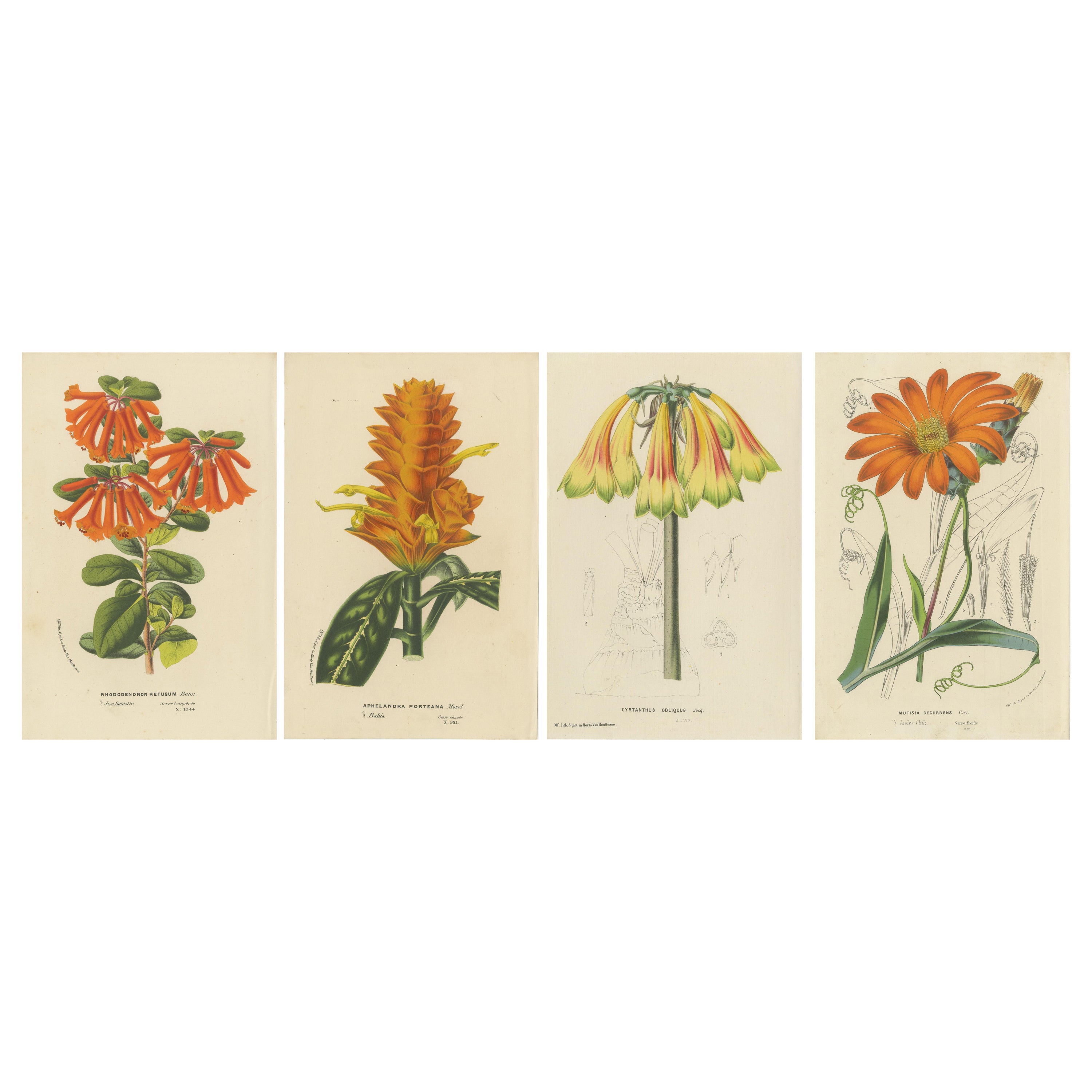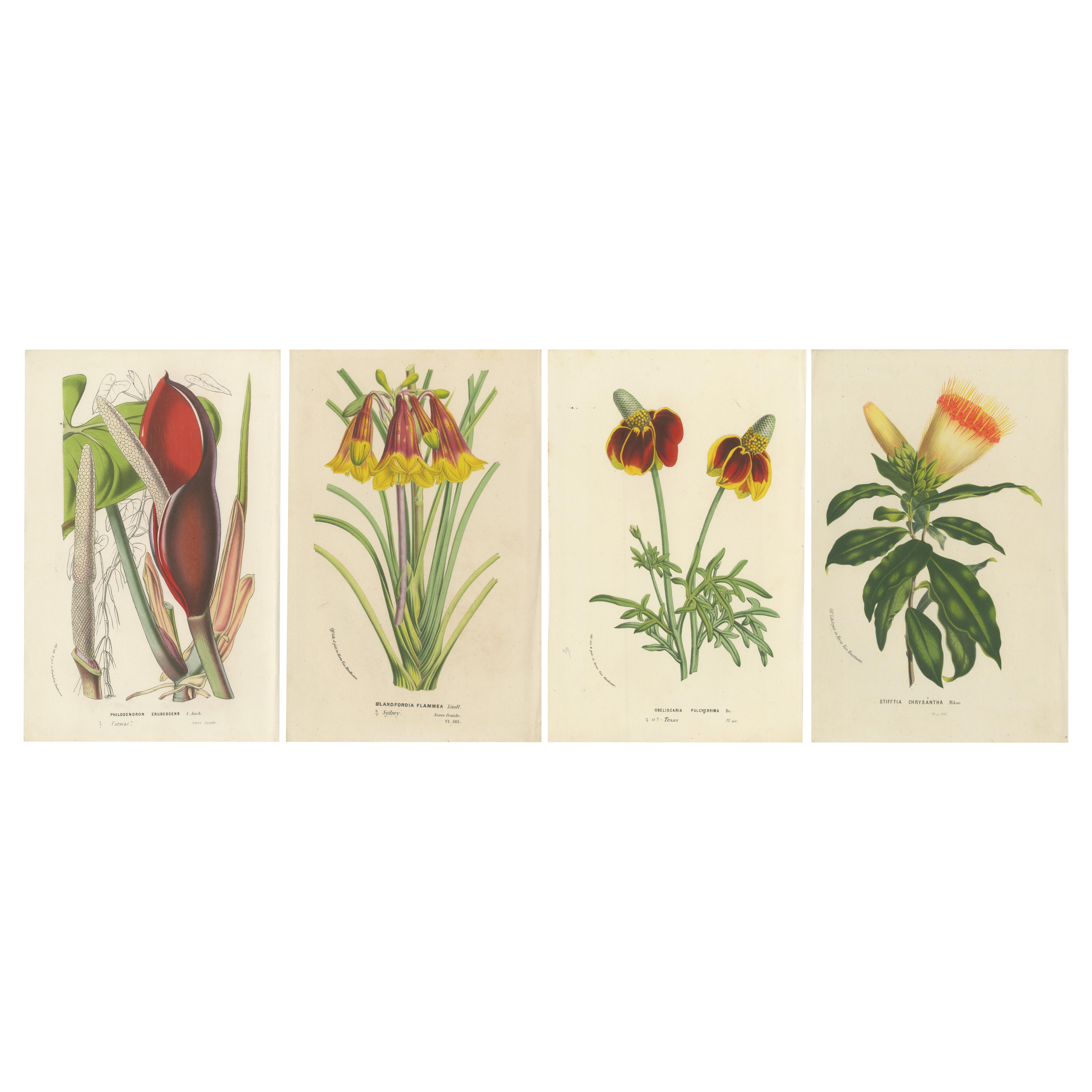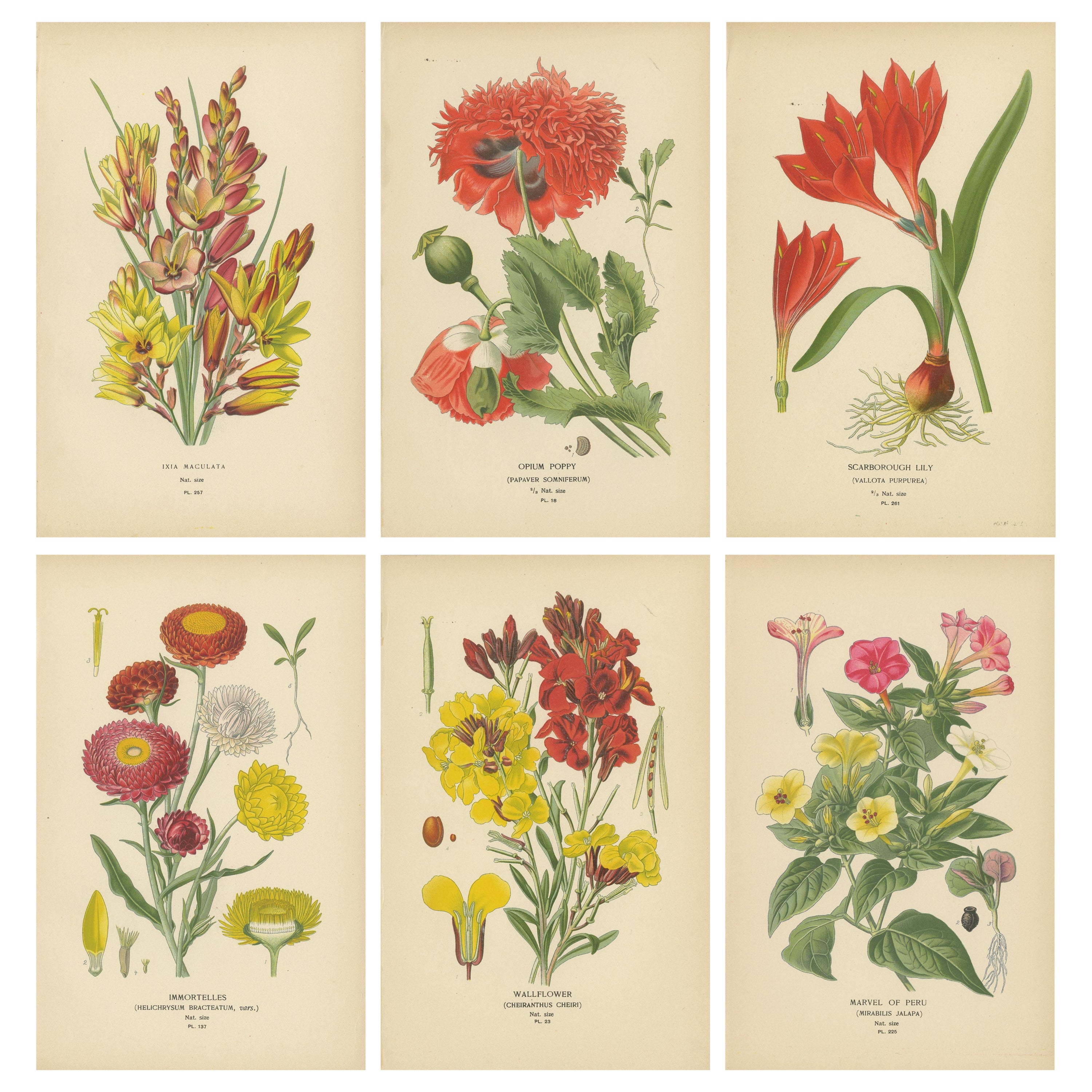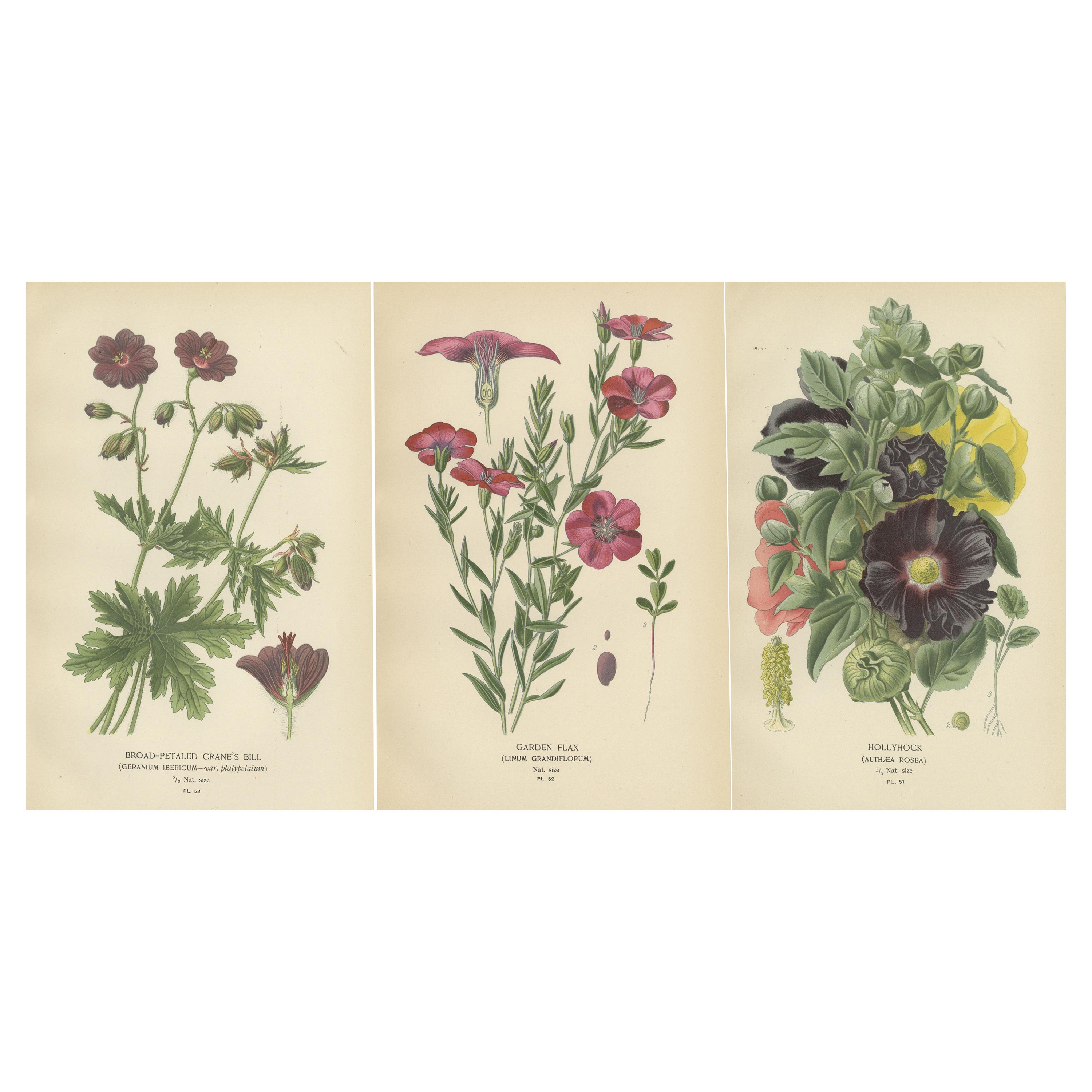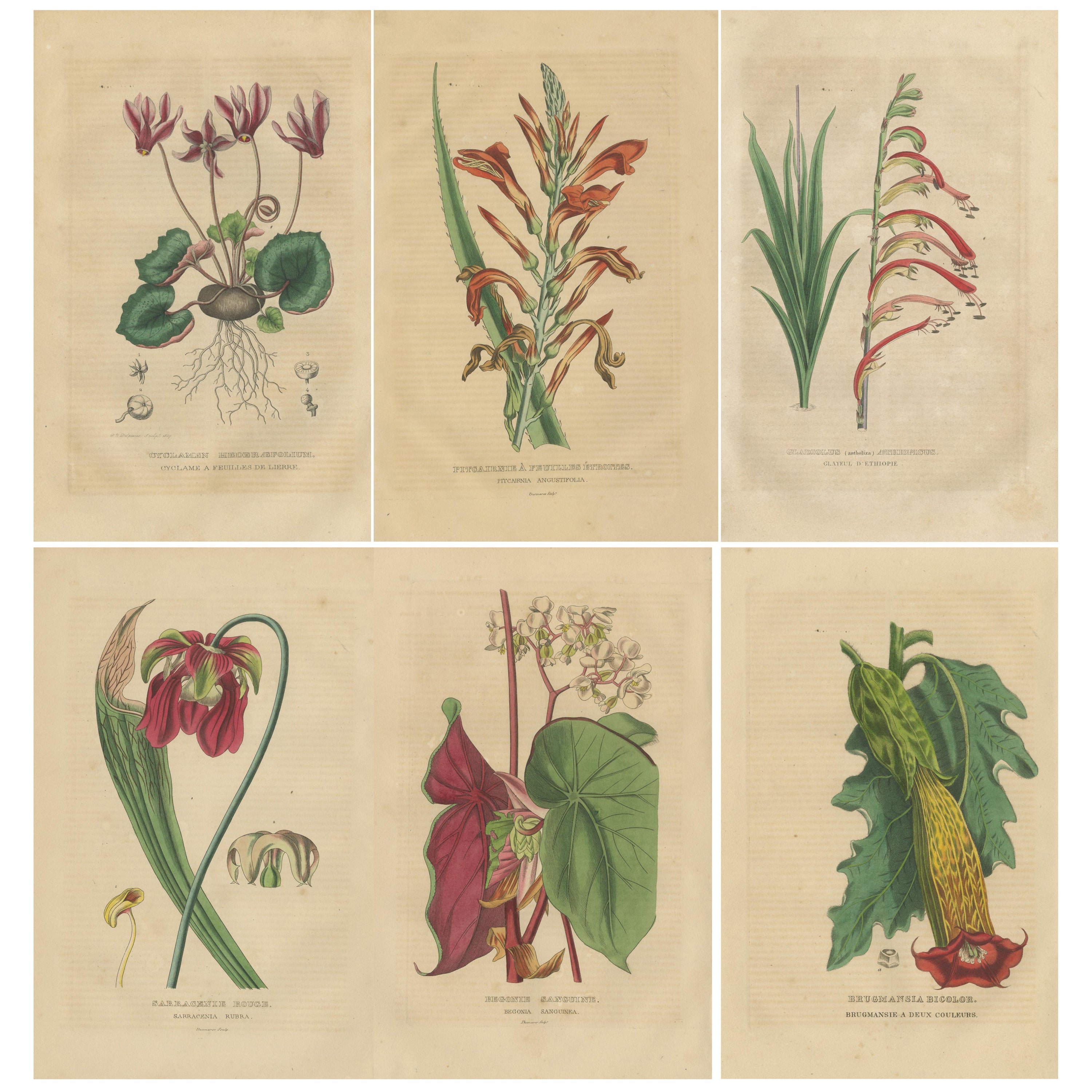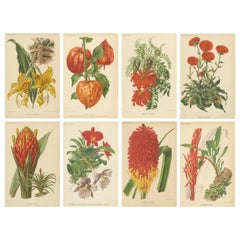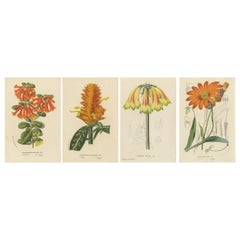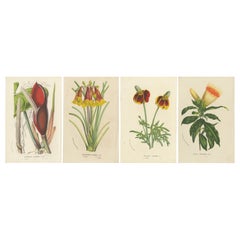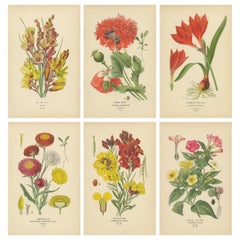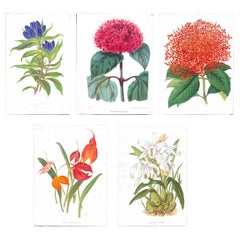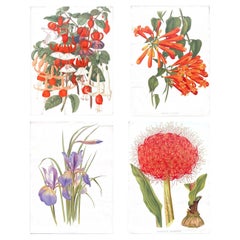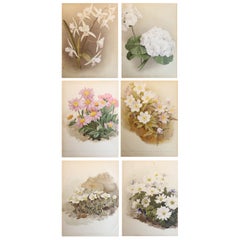Items Similar to Botanical Illustrations from the Victorian Era: A Visual Celebration of Flora
Want more images or videos?
Request additional images or videos from the seller
1 of 8
Botanical Illustrations from the Victorian Era: A Visual Celebration of Flora
$467.62per set
$584.53per set20% Off
£345.72per set
£432.15per set20% Off
€392per set
€490per set20% Off
CA$643.21per set
CA$804.01per set20% Off
A$714.96per set
A$893.70per set20% Off
CHF 374.77per set
CHF 468.46per set20% Off
MX$8,731.43per set
MX$10,914.29per set20% Off
NOK 4,678.77per set
NOK 5,848.46per set20% Off
SEK 4,401.85per set
SEK 5,502.31per set20% Off
DKK 2,984.29per set
DKK 3,730.36per set20% Off
About the Item
These are vibrant chromolithographs from "Favourite Flowers of Garden and Greenhouse" by Edward Step, illustrated by Désiré Bois and published in 1896 by Frederick Warne & Co., London.
Each plate vividly captures the unique characteristics of various plant species, showcasing Bois's attention to botanical detail and color. Here's a description of each print and their English names:
1. **Clivia Miniata** - Commonly known as "Clivia" or "Kaffir Lily," this print highlights the bright orange-red flowers with a striking yellow throat, set against dark green, strap-like leaves.
2. **Paeonia Tenuifolia** - Known as the "Narrow-Leaved Peony," this illustration features the distinctively fine, almost needle-like leaves with a large, central red flower showcasing prominent yellow stamens.
3. **Phyllocactus Phyllanthoides** - Often called "Leaf-Stemmed Cactus," it displays vibrant red flowers emerging from the flattened green leaf-like stems typical of the phyllocactus.
4. **Anemone Hortensis var. Fulgens** - Termed "Flame Anemone," this chromolithograph depicts the fiery red flowers, each detailed with a black central disc, surrounded by thin, dissected leaves.
5. **Anthurium Scherzerianum** - Also known as "Flamingo Flower," renowned for its waxy, bright red spathes with a curled orange spadix, supported by a lush arrangement of green leaves.
6. **Gladiolus Gandavensis** - Referred to as "Ghent Corn-Flag," this print showcases tall stalks bearing multiple bright red to pink flowers with white and deeper red markings, a popular choice in ornamental horticulture.
These chromolithographs demonstrate the elaborate and precise nature of botanical illustration during the Victorian era, which aimed not only to educate but to delight with aesthetic beauty. Each image serves as a historical record of plant varieties popular in gardens during the late 19th century.
About the maker:
Louis van Houtte was a prominent Belgian horticulturist and botanist renowned for his significant contributions to botanical illustration during the 19th century. Born in 1810, van Houtte is best known for his work as the proprietor of one of the largest and most successful horticultural establishments in Europe, located in Ghent, Belgium. His nursery specialized in exotic plants, and he employed numerous skilled gardeners and botanists.
Van Houtte's most famous legacy is perhaps the "Flore des Serres et des Jardins de l'Europe," a monumental work published between 1845 and 1883. This publication was an extensive series of horticultural and botanical books that illustrated thousands of plant species, many of which were new to science and European gardens at the time. The work combined scientific accuracy with artistic beauty, showcasing the talents of several gifted artists and lithographers.
The illustrations in "Flore des Serres" were primarily lithographs, a method that allowed for detailed and vibrant color reproductions, which were essential for the study and popularization of plant species. These prints not only served as a catalog of exotic plants available for purchase from his nursery but also as an educational tool and a source of inspiration for gardeners and botanists across Europe.
Van Houtte's contributions to botanical art and horticulture were driven by a passion for plants and an entrepreneurial spirit that recognized the growing public interest in botany. His work helped disseminate botanical knowledge and influenced European garden design in the Victorian era.
The creator of these prints, often a collaboration between botanists and skilled artists, aimed to capture the intricate details of each plant for purposes of study and record-keeping. The style of these prints suggests they could have been made by European illustrators and botanists, possibly as part of a larger botanical survey or for inclusion in a comprehensive botanical text. The high level of detail and the vivid coloring techniques are indicative of the lithographic processes that were popular in botanical illustration during the 19th century, used to ensure that both the scientific community and horticultural enthusiasts could share knowledge and appreciation of plant species from around the world.
- Dimensions:Height: 9.85 in (25 cm)Width: 6.42 in (16.3 cm)Depth: 0 in (0.02 mm)
- Sold As:Set of 6
- Materials and Techniques:
- Period:
- Date of Manufacture:Circa 1875
- Condition:Condition: Good, given age. General age-related toning and/or occasional minor defects from handling. Colors are vivid. Please study scan carefully.
- Seller Location:Langweer, NL
- Reference Number:Seller: BG-13761-44, BG-13761-45, etc1stDibs: LU3054341445922
About the Seller
5.0
Recognized Seller
These prestigious sellers are industry leaders and represent the highest echelon for item quality and design.
Platinum Seller
Premium sellers with a 4.7+ rating and 24-hour response times
Established in 2009
1stDibs seller since 2017
2,604 sales on 1stDibs
Typical response time: <1 hour
- ShippingRetrieving quote...Shipping from: Langweer, Netherlands
- Return Policy
Authenticity Guarantee
In the unlikely event there’s an issue with an item’s authenticity, contact us within 1 year for a full refund. DetailsMoney-Back Guarantee
If your item is not as described, is damaged in transit, or does not arrive, contact us within 7 days for a full refund. Details24-Hour Cancellation
You have a 24-hour grace period in which to reconsider your purchase, with no questions asked.Vetted Professional Sellers
Our world-class sellers must adhere to strict standards for service and quality, maintaining the integrity of our listings.Price-Match Guarantee
If you find that a seller listed the same item for a lower price elsewhere, we’ll match it.Trusted Global Delivery
Our best-in-class carrier network provides specialized shipping options worldwide, including custom delivery.More From This Seller
View AllOriginal Vintage Botanical Illustrations from Revue Horticole, circa 1855
Located in Langweer, NL
Here are descriptions of the eight botanical illustrations, including the Latin and English names of the plants, why they are significant, and details about the creators and the tech...
Category
Antique 1850s Prints
Materials
Paper
$639 Sale Price / set
20% Off
Vibrant Botanical Portraits: Exquisite Plant Illustrations from the 19th Century
Located in Langweer, NL
These illustrations, executed with precision and rich coloration, are fine examples of chromolithography, a technique popular in the 19th century for its ability to produce vivid, mu...
Category
Antique 1870s Prints
Materials
Paper
$362 Sale Price / set
20% Off
Flora Illustrated: A Collection of 19th Century Botanical Art, Published c.1875
Located in Langweer, NL
The prints depict various botanical species, each illustrated with detailed attention to the morphology of the plants, including leaves, flowers, and sometimes fruits or seeds. These...
Category
Antique 1870s Prints
Materials
Paper
$324 Sale Price / set
20% Off
Floral Treasures: 19th-Century Chromolithographs from the Botanical Collection
Located in Langweer, NL
The following six chromolithographs are part of a collection published in 1896, created by Désiré Bois and Edward Step. They illustrate botanical subjects with remarkable attention t...
Category
Antique 1890s Prints
Materials
Paper
$515 Sale Price / set
20% Off
Victorian Botanical Splendor: A Collection from Step's Horticultural Compendium
Located in Langweer, NL
"Victorian Botanical Splendor: A Collection from Edward Step's Horticultural Compendium"
Three prints showing the wider array of botanical illustrations from Edward Step's "Favourit...
Category
Antique 1890s Prints
Materials
Paper
$324 Sale Price / set
20% Off
Free Shipping
Botanical Rarities: Pristine Hand-Colored Engravings from 1845
Located in Langweer, NL
This image is a beautiful collage of antique hand-colored botanical engravings from 1845, each showcasing a different plant species with exceptional detail and vibrant colors. The en...
Category
Antique Mid-19th Century Prints
Materials
Paper
$528 Sale Price / set
24% Off
Free Shipping
You May Also Like
Bignonia venusta – Antique Botanical Chromolithograph, 1880s
Located in Fukuoka, JP
A striking original botanical print from the 1880s, featuring Bignonia venusta, also known as flame vine or orange trumpet vine. This brilliantly colored illustration captures the dr...
Category
Antique 19th Century French Prints
Materials
Paper
Original 1880s Botanical Print of Hæmanthus Kalbreyeri — Vibrant Antique Chromol
Located in Fukuoka, JP
A striking original chromolithograph from the 1880s, this botanical print features the dramatic Hæmanthus kalbreyeri, also known as the blood lily. Characterized by its intense red s...
Category
Antique 19th Century French Prints
Materials
Paper
Set of 16 Original Antique Botanical Prints, circa 1850
Located in St Annes, Lancashire
Wonderful set of 16 botanical prints
Lithographs after the original botanical drawings by Hooker.
Original color
Published, circa 1850
Unframed.
The measurement given is for one...
Category
Antique 1850s English Early Victorian Prints
Materials
Paper
Set of 6 Original Antique Botanical Prints, circa 1870
Located in St Annes, Lancashire
Lovely set of 6 botanical prints
Chromo-lithographs
Original color
Published, circa 1870
Unframed.
The measurement given is for one print.
Free shipping
Category
Antique 1870s English Victorian Prints
Materials
Paper
Early 20th Century, Italian Botantical Prints
Located in Long Island City, NY
Early 20th century, Italian Botantical prints. 8 Available.
Category
20th Century Italian Prints
Pair of Original Vintage Botanical Prints, circa 1900
Located in St Annes, Lancashire
Great images of medicinal plants
Unframed.
Published, circa 1900.
Free shipping
Category
Antique Early 1900s English Edwardian Prints
Materials
Paper
More Ways To Browse
Victorian Era
Flamingo Antique
Flamingo Wall Art
Corn Stalk
Antique Flamingo Print
Cobalt Blue Porcelain And Bronze Urn
Crab Claw
Crockery Cabinet
Crystal Cat Vintage
Danish 3 Chest Of Drawers
Decorative Crafts Inc Brass
Delft Large Jars
Discus Thrower
Double Pendulum
Dovetail Vinyl Record
Dragon Boat
Drexel Chinoiserie
Drexel Precedent
